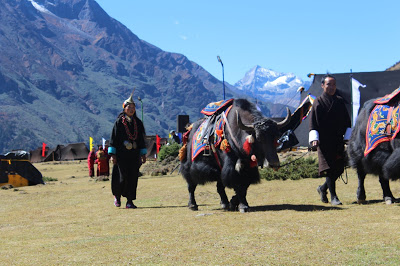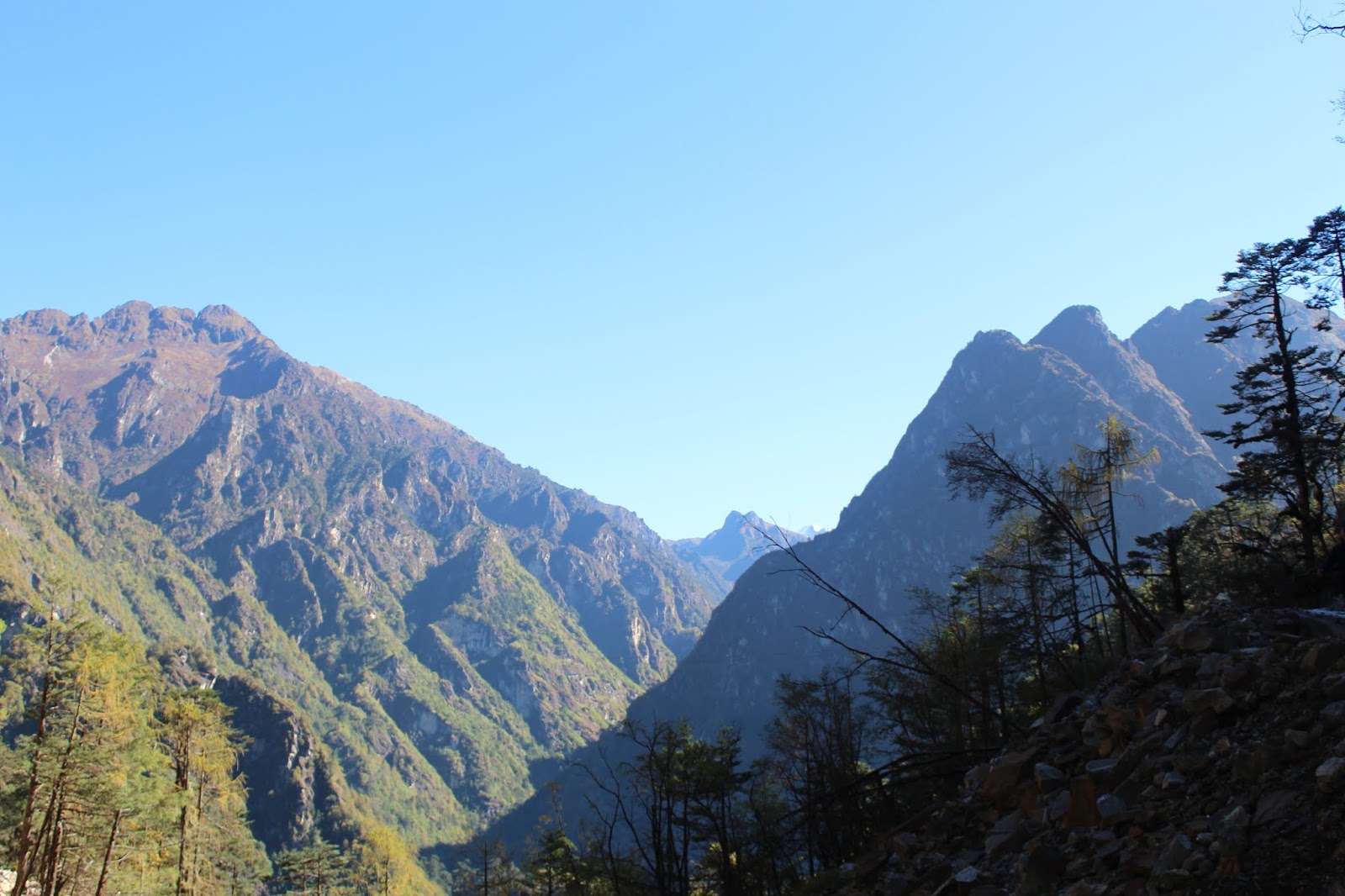Laya: among the blissful terrains

Sharing a little connection to one of the oldest and fabled tales of Gasa Lamai Singye and Changyul Bum Galem, Gasa and Punakha were always on my list. However, I did not wish to reach the place soon and early.
On the festive season of Royal Highlander Festival, the carnival among mountain myths and epic, Gasa dzong was wearing its best glory and rising again to its century-old history.
The renovation of Gasa dzong, one of the oldest in the country, was more than 60 percent complete when I first touched the place. I was blessed with this significant welcome to begin my young career as a storyteller.
Miles away from small clustered town, I saw nothing more than rugged terrains and snowcapped mountains. There was no sign of settlement beyond those ranges.
Laya could be here! I assumed as I got off the car. It took me about 10 minutes to explore the whole stretch of the town.
“The place is small and temporary here. Laya has a better setting. Nature and the chained ranges surrounding the place will assure you a delightful experience. It takes a day to reach Laya,” told a shopkeeper when I asked about the place.
Laya was not in that small town! I was in Gasa town.
Laya, one of the remote villages in Gasa remains hidden behind the overarching peaks, snowcapped mountains, and valleys. Trekking the natural trail, climbing the terrains in a cold weather kept the village hours of walk away from little Gasa town.
The journey to the village requires unlocking of several valleys along the basin of Mo Chhu and hike above 3,000 metres. It becomes more sweating when you travel during monsoon, and demanding when you have walked the trail before on a fine weather.
Four months ago in October, a team of reporters and youth volunteers headed to Laya for second Royal Highlander Festival. The festival held above 4,000 metres among the mist and frozen breeze.
Highlanders, locals, and tourists celebrate the age-old tradition, lifestyle, and culture of nomads. It reminds of the change and the stories of the future.
The annual celebration organized by Gasa dzongkhag promotes highland as community tourism destination. Provide its people an opportunity to win more cash from porter service and highland produce exhibition. Above all, feel privileged to preserve the evading tradition and lifestyle for the times beyond. This could probably be the most prestigious to inherit for the future.
I was one among them. There were more lady colleagues from print, radio and volunteers in the team. This helped me become more confident to climb the elevation unknown, and the fear of catching altitude sickness was of no worry. We were two from the Kuensel newspaper.
While my senior, Azhim Yeshey and her colleagues farced on the wealthy man called Layap Tenzing, gents were in excitement to meet the most celebrated women from the highland called Layap Zam, on the way.
Laya is almost connected now. We got off the bolero car at the place called Ponjothang; the place is known for rest and halt for Layaps. It is an hour drive away from the fortress of Gasa Tashi Thongmoen Dzong.
Excitement and smile on every face, the team was energetic. I was unfortunate to miss the most interesting minute before the team began walking.
While the porter was readying the loads and the colleagues preparing for group photography, I was busy searching for open-air toilets among the woods. When I returned, photography was done.
The journey began with all descending towards the freshly cut road-end called Koina. The trail to Laya was busy with officials, locals, and tourists. I did not expect a tourist to be in such number and family. Some were returning from Laya.
The walk from Koina takes more than four hours for the locals. The trails were stretched on the slopes of hills, hung on cliffs, and along the Mo Chhu basin.
Walking along the trail reminds you of how far the change has come to the people and the place. How conventional the journey to Laya remains despite the change and development coming close.
Treeline and vegetation on another side of Mo Chhu endured; untouched, and green. Everyone walked fast in the beginning. The elevation stretched further as we hiked more hills, plains, and cliffs. Porters carrying heavy loads caught us by the time we reached the lunch point.
Muscles started to slit and the dehydration just began. I reached the lunch point on right time. The Highlander festival convinced the locals to come up with makeshift food stalls, halfway to reach Laya.

The team got divided along the way. Some reached the lunch point about 30 minutes ahead of the last team that included few officials, some volunteers and myself.
Relaxed and happy I was to see the whole team together again. The small makeshift was flooded with hungry and tired festivalgoers. Some continued their two or more hour journey to reach Laya. I could barely exchange any greetings.
By the time I reached the lunch point, I asked more than 15 locals along the way about the time I would take to reach Laya. Some said I was almost there while many said it was about an hour walk.
As we were nearing to the place, some of our friends could not accustom to the reduced oxygen in the air. This delayed our time to reach Laya by hours. The journey also taught me of native practice used to avoid altitude sickness. Chewing sweets, walking together and not plucking or smelling highland herbs were some.
Taktsemakha; the final uphill stretch to reach Laya was sweating and the sun called for the day off as it planned to hide behind the ranges afar. I did not wish to visit the place again.
However, the scenery at the end of uphill was refreshing and fulfilling. The expectation from the place grew more. The century-old customary gate that had its roof breaking down greeted us with an antique feeling. The ancient architecture gave us a native image of the place.
The dusk fell earlier than us to Laya that day. It was only the next morning to feel my first day at one of the most beautiful highland communities and to experience the indigenous culture kept alive despite the change and development encroaching the place.
The time to visit the place has come again, the call from the mountain is clear and I dear the call more than anything. Laya stands for story, happiness, and beauty. Be among the blissful terrains this October, the Royal Highlander Festival begins from 23 this month.
